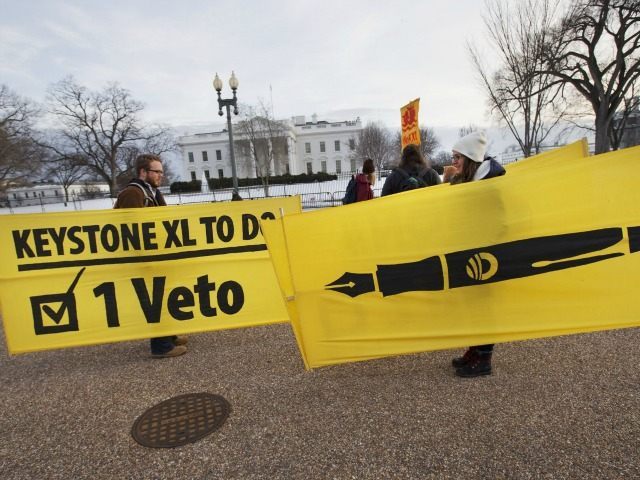President Donald Trump has given the green light to the Keystone XL pipeline that will transport crude oil from Canadian oil-well to the refineries and ports in the United States, after then-President Barack Obama put the project on hold in 2012 to please climate change activists.
“The Under Secretary of State for Political Affairs has issued a Presidential permit to TransCanada Keystone Pipeline, L.P. (“TransCanada”) authorizing TransCanada to construct, connect, operate, and maintain pipeline facilities at the U.S.-Canadian border in Phillips County, Montana for the importation of crude oil,” a press release issued by the State Department on Friday said.
“The Department of State reviewed TransCanada’s application in accordance with Executive Order 13337 (April 30, 2004) and the January 24, 2017 Presidential Memorandum Regarding Construction of the Keystone XL Pipeline,” the announcement said. “In making his determination that issuance of this permit would serve the national interest, the Under Secretary considered a range of factors, including but not limited to foreign policy; energy security; environmental, cultural, and economic impacts; and compliance with applicable law and policy.”
Secretary of State Rex Tillerson, former CEO at ExxonMobile, recused himself from decisions on the pipeline, so the permit was signed by Under Secretary of State for Political Affairs Thomas Shannon.
“This is a significant milestone for the Keystone XL project,” Russ Girling, TransCanada’s president and chief executive officer, said in a statement.
“A significant milestone for the Keystone XL project," said Russ Girling, president &CEO https://t.co/HzvLhlYtAs #TimeToBuildKXL
— TransCanada (@TransCanada) March 24, 2017
“We greatly appreciate President Trump’s Administration for reviewing and approving this important initiative and we look forward to working with them as we continue to invest in and strengthen North America’s energy infrastructure,” Girling said.
On Jan. 24, Trump signed a memorandum inviting TransCanada, the company that owns the pipeline, to reapply to the U.S. State Department for approval of the project. Because the company in charge of the pipeline is not in the United States, its approval falls to the State Department.
Keystone XL is 36-inch-diameter crude oil pipeline system that will carry up to 830,000 barrels of petroleum per day from the oil sands in Canada to oil refineries and ports on the Gulf Coast of the United States.
According to the State Department’s January 2014 Final Supplemental Environmental Impact Statement, greenhouse gas emissions will actually increase without the pipeline if the crude oil from Canada is alternatively transported by rail across the U.S.
“During operation of all No Action rail scenarios, the increased number of unit trains along the scenario routes would result in GHG emissions from both diesel fuel combustion and electricity generation to support rail terminal operations (as well as for pump station operations for the Rail/Pipeline Scenario),” the FSEIS said. “The total annual GHG emissions (direct and indirect) attributed to the No Action scenarios range from 28 to 42 percent greater than for the proposed Project.”
The State Department also found that alternative energy would not replace the need for fossil fuel.
“The analysis found that even with renewable energy and conservation, there would still be a demand for oil sands-derived crude oil,” the FSEIS said. “Based on this evaluation, these alternatives were not carried forward for further analysis as alternatives to the proposed Project.”

COMMENTS
Please let us know if you're having issues with commenting.